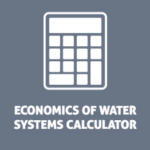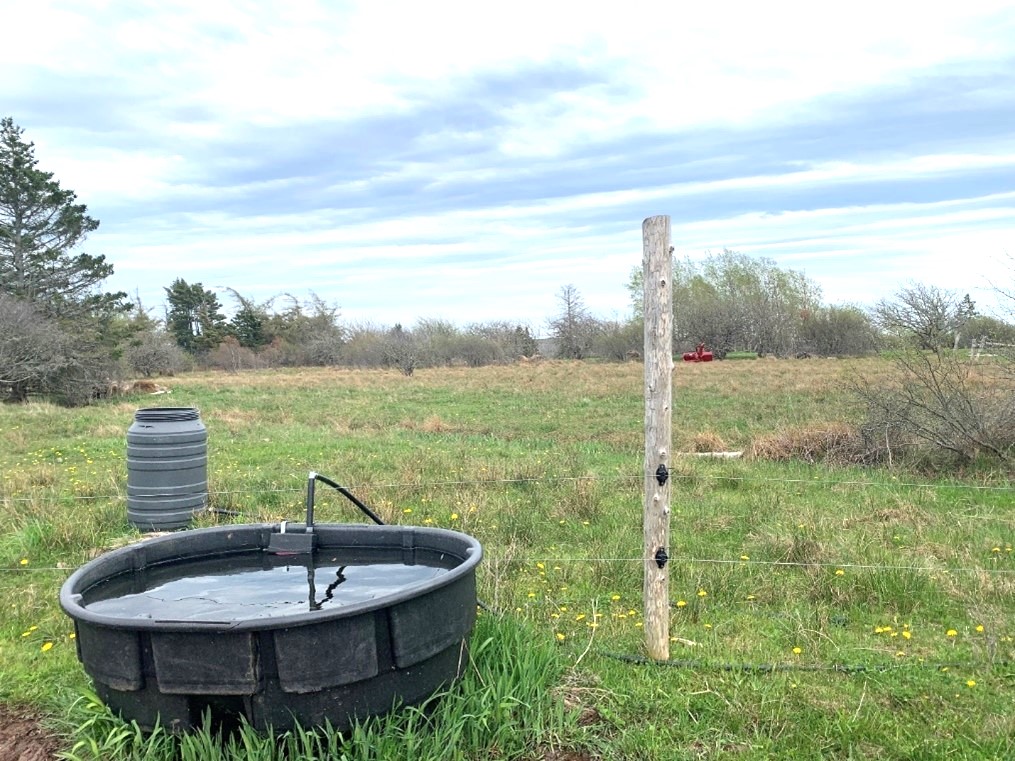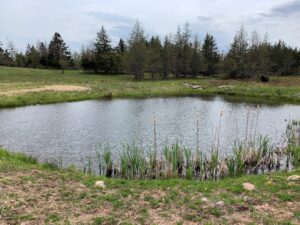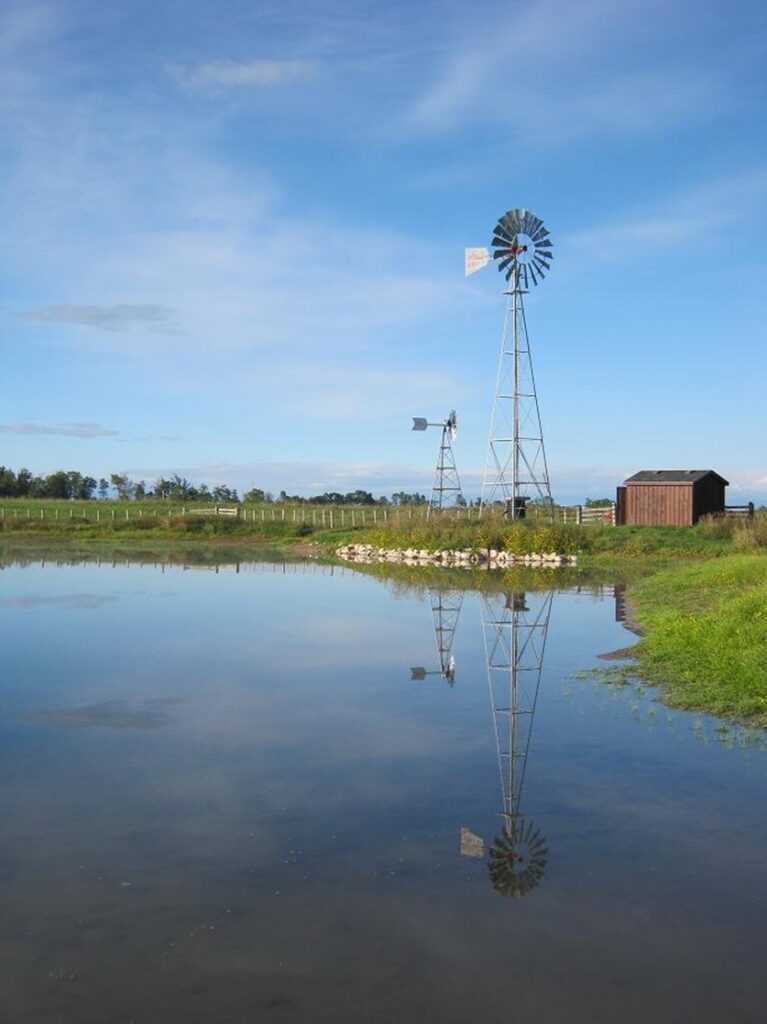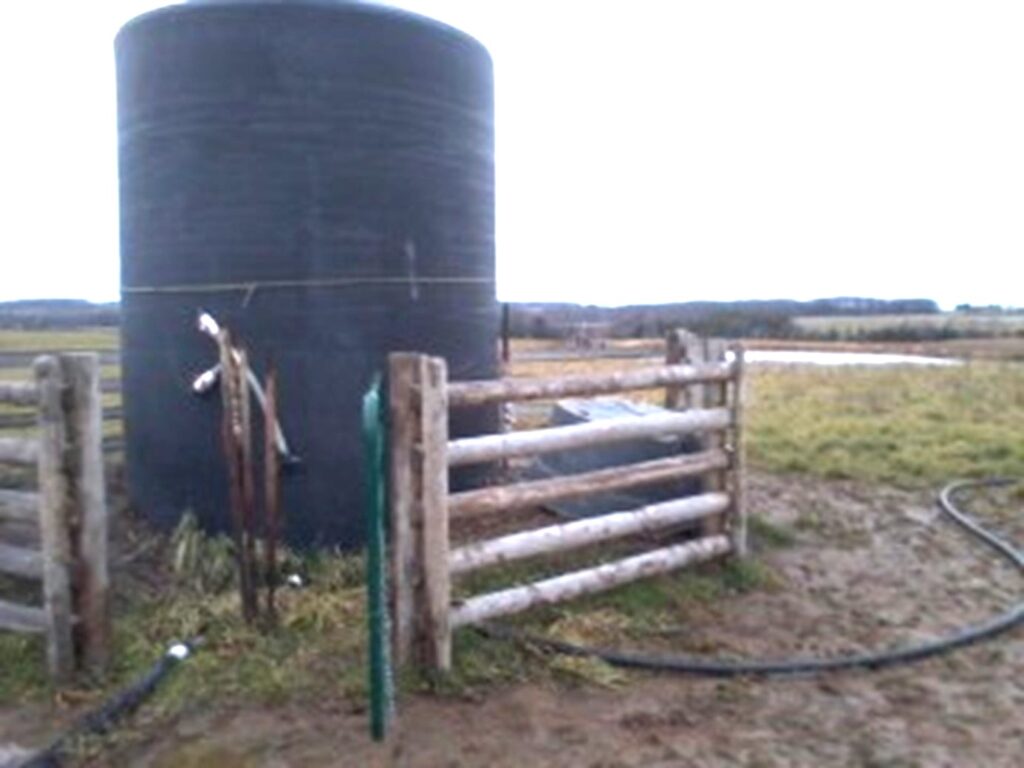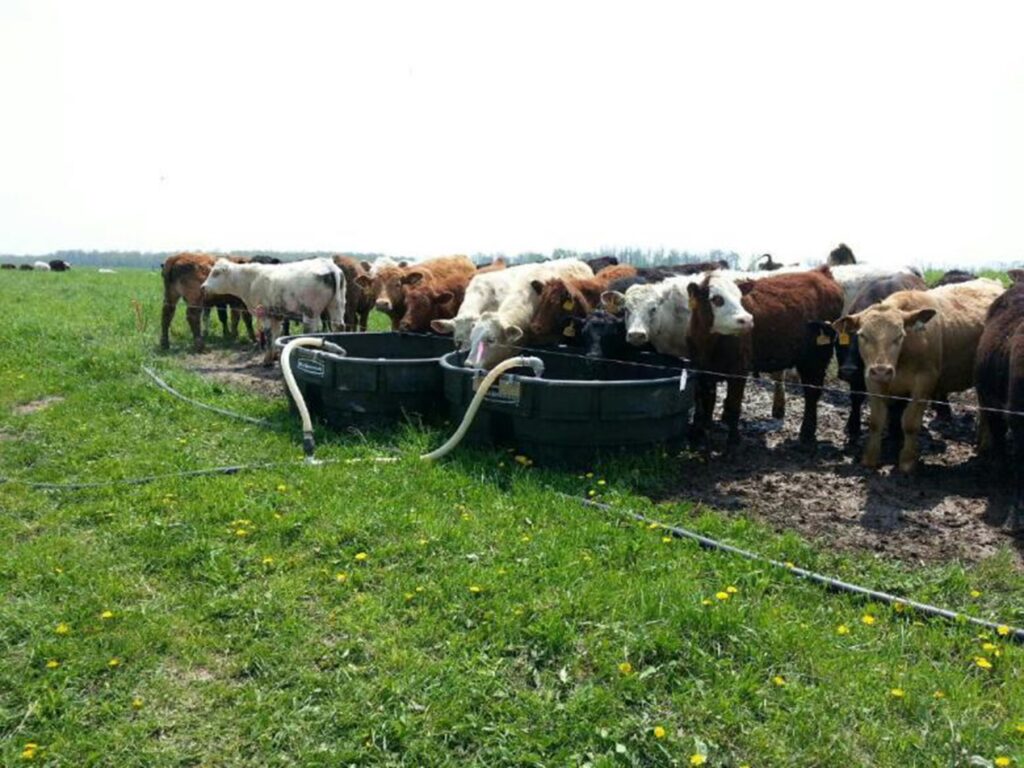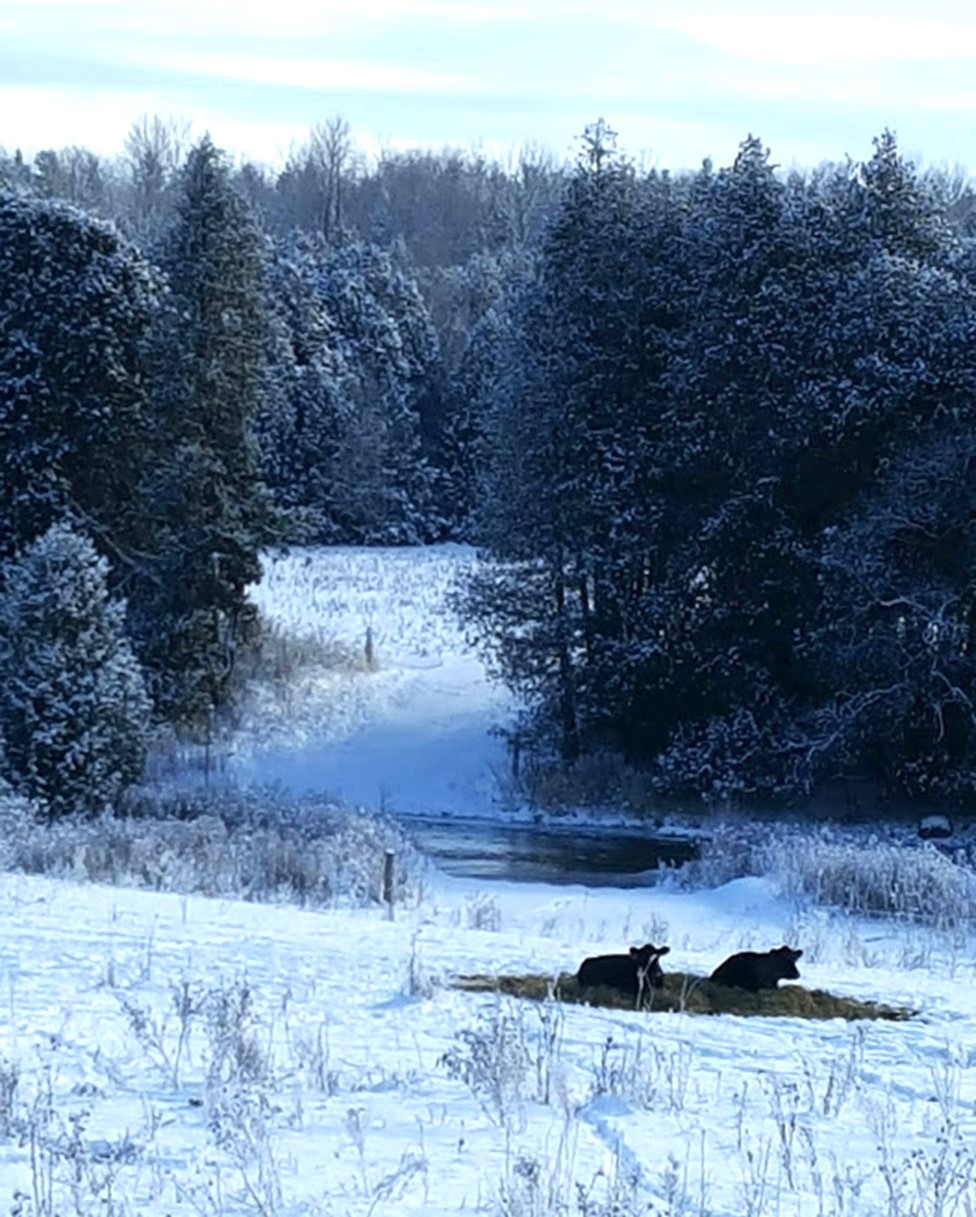Water Systems on Pasture: An Eastern Canadian Beef Producer Perspective 🎙️
CLICK THE PLAY BUTTON TO LISTEN TO THIS POST:
Listen to more episodes on BeefResearch.ca, Spotify, Apple Podcasts, Amazon Music or Podbean.
One of the major limitations to grazing new paddocks, pastures or intensifying grazing systems is ensuring beef cattle have a consistent source of clean water. Access to natural surface water, such as rivers and streams, can be a major asset in watering system implementation. However, reducing and managing cattle access is recommended to prevent damage to water banks.

Research has demonstrated improved performance in cattle when provided water pumped into tanks or troughs. Calves grow more efficiently, and they have less exposure to pathogens. Additionally, it limits excess nutrients and bacteria from entering the riparian area.
Many different systems and configurations are possible, even in remote areas without access to electrical power, through use of solar- or wind-powered options. For producers interested in installing a new watering system, several factors should be considered, including the water source, time of year, water capacity required and location.
The BCRC’s Water Systems Calculator is a useful tool producers can use to estimate the economics associated with installing a new pumped watering system based on their unique situation.
In Eastern Canada, one of the most common ways of delivering water to pastures is by pumping water from a drilled well through a pipeline system. Pipelines can be buried below the frost line or remain above ground and be removed during winter. An above-ground system works efficiently for rotational grazing setups where many quick-connect couplings can be added along the line and the water trough can be moved with the cattle. Of course, individual producers will have their own unique requirements for a watering system.
The following producer profiles highlight different ways pasture watering systems are used on-farm in Eastern Canada.
Dandy Little Farm- Joggins, Nova Scotia
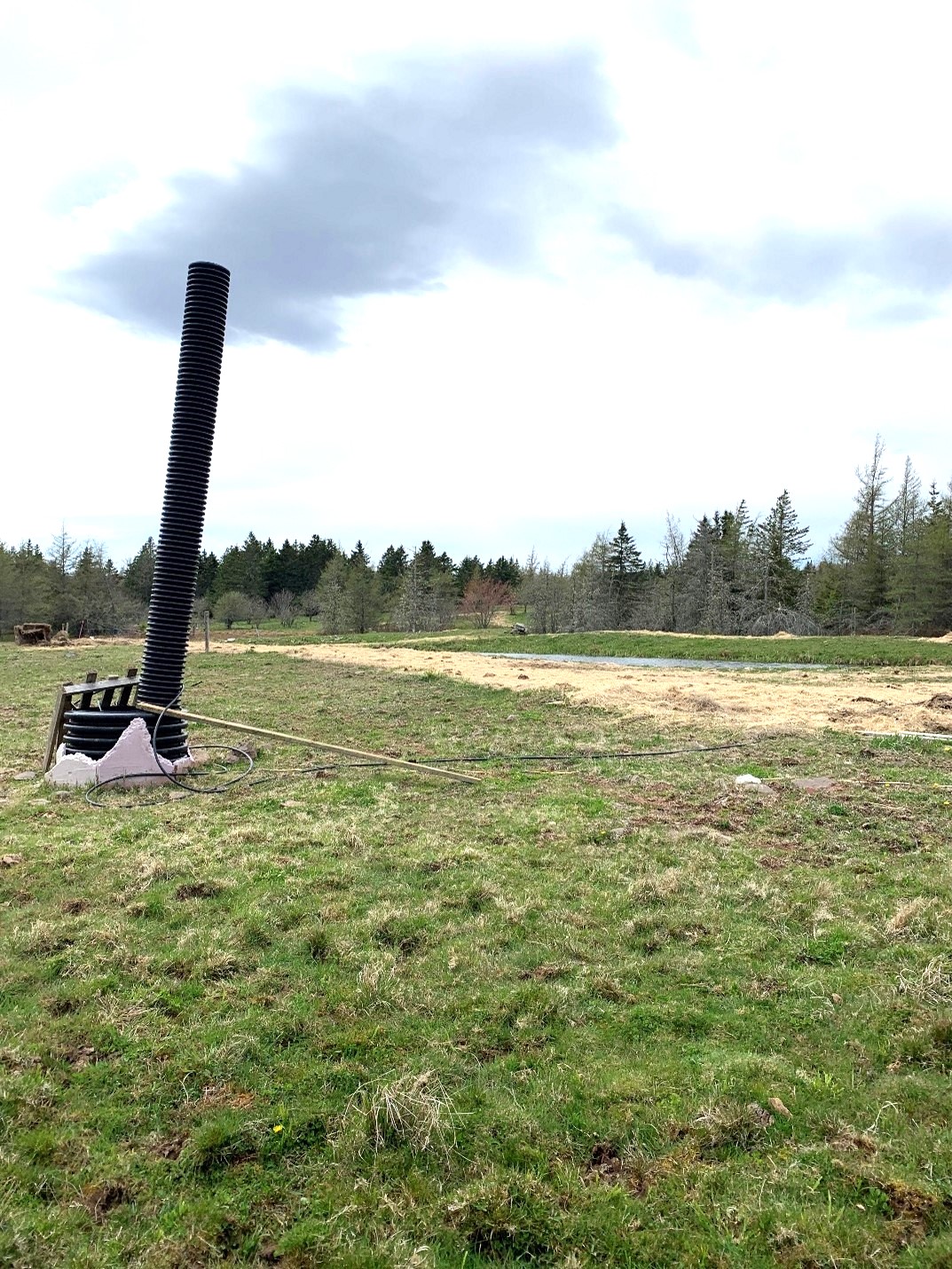
Dandy Little Farm, located outside of Amherst, Nova Scotia, is operated by Mandy and Dan da Costa, who have been farming beef cattle since 2015. Promoting environmental sustainability and reducing their carbon footprint are major goals for their operation, which they manage through optimizing grazing, reducing inputs and minimizing a reliance on machinery to move feed and manure. Mandy is also a chef that aims to produce an excellent product for their direct-sale consumers.
Their herd of 35 cows primarily consists of Lowline Angus, with a few commercial cows from their initial herd purchase, whose genetics suit their needs for a low-input, pasture-based system. They calve once a year on pasture in late spring. They have been using careful grazing to re-establish healthy and productive pasture on 40 acres of land, which had been left fallow for several years before they purchased it. The da Costas also have an additional eight acres of pastureland and 120 acres of woodlot. They keep cattle on pasture year-round.
Ensuring good-quality water is available consistently is a key component of being able to maintain their cattle outdoors in all seasons. In 2017 and 2018, they dug two multi-purpose ponds with the original intent of storing water, feeding a well for livestock watering and recreational use. This evolved to include watering on pasture by pumping water from a vertical well to a stock tank in different pastures. Water moves from the ponds, to the well, to a tote and finally to a stock tank that is moved with the herd.
The location for the ponds was chosen based on observation of persistent natural water presence in a lower part of a field. “In hindsight, we would have put the ponds on higher ground, so tanks are gravity-fed. At the time, we only knew what we knew. I would say the biggest part of this is understanding your landscape and walking your property. You need to understand your landscape,” Mandy emphasized.
Dan suggests walking the land during different seasons and years, time permitting, and taking advantage of online tools, like Google Earth, that can offer information from different times. They state that understanding how surface water is naturally moving on the land should be the biggest factor in pond and culvert placement. The culvert that empties from the original pond follows the naturally occurring ditch, which Dan suggests was an error as it contributes to water entering the adjacent pasture. In hindsight, he would have situated the culvert to exit the pond in a manner that contributed to less seepage in the pasture.
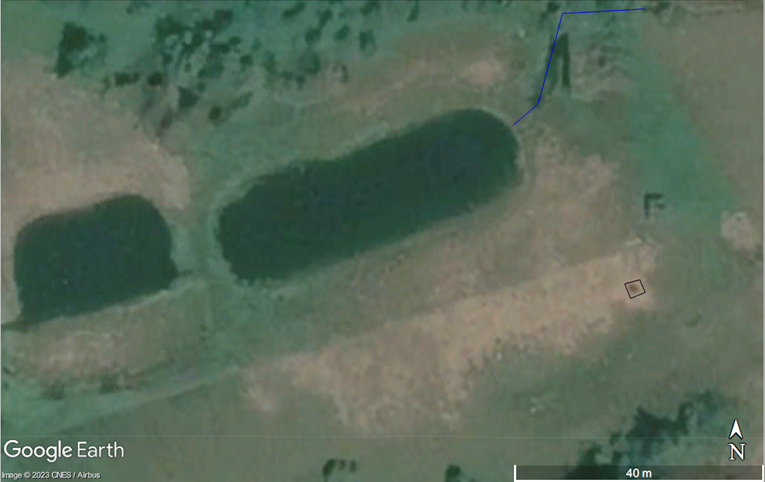
Another recommended step from the da Costas would be hiring the expertise needed. “Hiring someone who knows what they are doing has been a key part of this,” Dan notes. “We could have rented an excavator and tried to do it ourselves, but it was so much more efficient to find people who know how to do this. The contractors that we hired have been doing this for decades and were finished in a matter of days.”
Lastly, the da Costas suggest lots of brainstorming before any pond is dug. Consider all the details of the planned use, including what are potential future developments that might affect your decision on the location or design of your watering system.
Peter Kotzeff, Bruce County, Ontario
Improving soil and water quality through cattle grazing, crop rotation, minimal tillage and cover crops is the mission of semi-retired veterinarian Dr. Peter Kotzeff. He raises cattle in Southwestern Ontario’s Grey and Bruce counties. Spanning over 2,000 acres, his farm consists of one quarter pastureland, one quarter woodlands, wetlands and river riparian area and one-half cash crops.
His commercial 150-head cow herd is maintained outdoors year-round so, therefore, water quality and access are integral to his operation’s success. He has utilized a variety of watering systems over the years, including ponds, windmill pumps, drilled wells and sloughs. His properties also encompass eight kilometers of the Saugeen River, plus numerous natural creeks and streams, which are fenced off to deny cattle access.
During the summer, Peter utilizes rotational grazing on large paddocks set up with water troughs. These paddocks are strip-grazed with cattle being moved every one to three days.
“It takes anywhere from 40 to 70 days to make a full rotation around the grazing cell,” he says.
On these paddocks, above-ground water lines are used with the water sourced from a drilled well with a pressure tank, a pond with a windmill pump or, at one location, a pond with a windmill pumping water to a holding tank located at the farm’s highest point. With this system, the water is then gravity-fed through above-ground lines to troughs in the different paddocks. A backflow pipe ensures the holding tank is never overfilled.
Since a lot of his land has access to natural surface water sources, Peter has set up locations with point source watering sites. These are areas where most of the river or stream has been fenced off, and there is only one point where cattle have access to the water.

“Often these are places that I can crossover from one paddock to the next as well,” he explains.
Fences are set up to strip graze the paddock around the access site.
Before allowing cattle entry to many of these point source water locations, a layer of filter cloth is laid down topped with crushed stone or gravel. This is gently sloped to the water’s edge and prevents damage to the river or stream bank.
This summer, Peter is also trying out a fourth summer watering system which is a portable, solar-powered water trough. This will increase flexibility and adaptability to different situations. As an example, instead of going through the work of setting up a point-source watering system, “the idea is that I will be able to place the water trough close to the river or stream that’s been fenced, put the hose in and pump the water directly to the trough,” he says, adding that the cattle will no longer need direct access to the river at these sites.
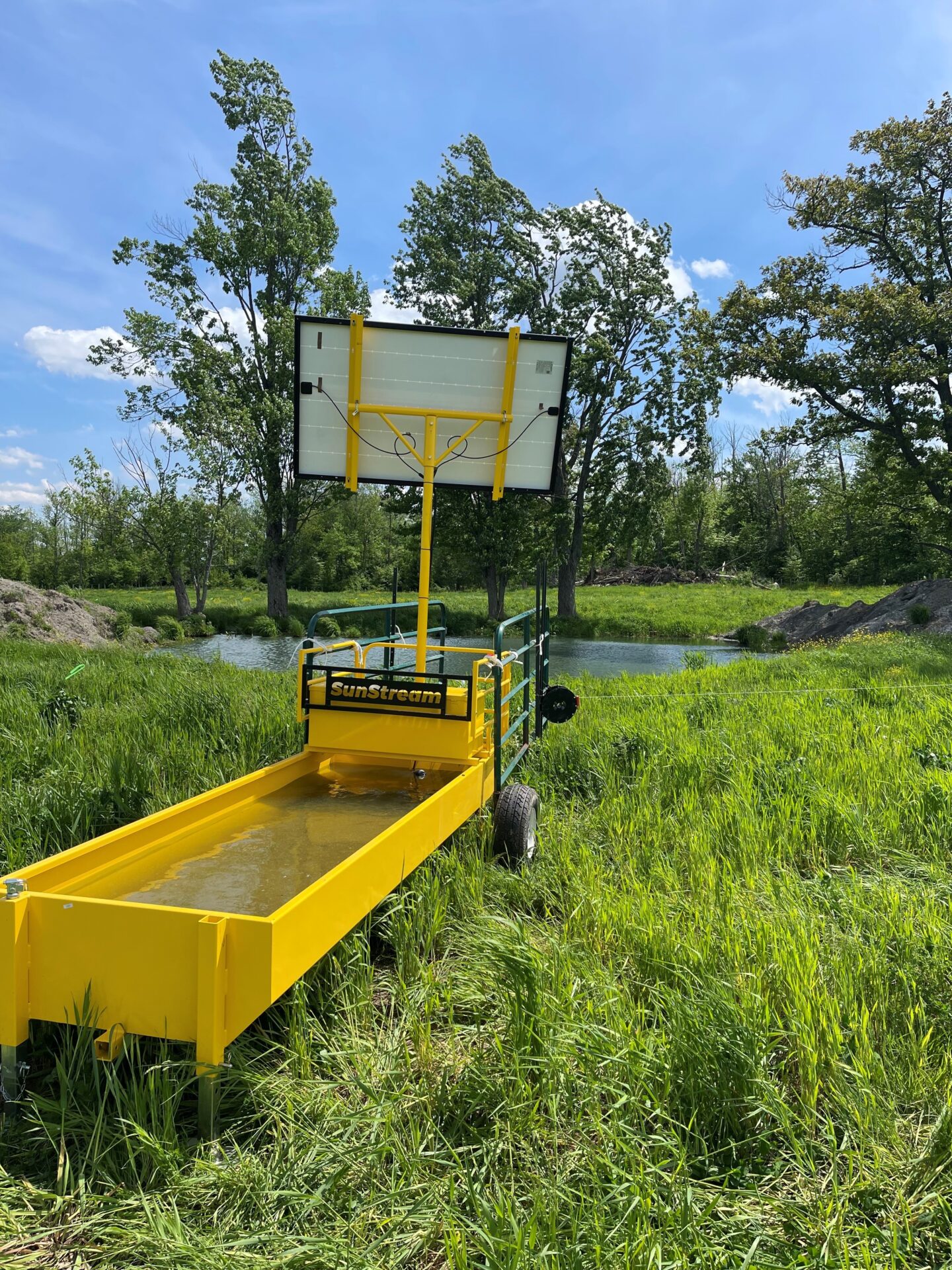
To maintain continuous cover and improve soil quality, Peter plants cover crops, which his cattle graze in the fall. Movable electric fences are set up to section off areas of the fields, with a portable corral system used for loading and unloading cattle. Existing watering systems in adjacent pastures are utilized whenever possible, including point source water sites. Above-ground water lines cannot be used during this fall grazing period due to freezing.
When the cover crop grazing is further away from an established pasture, the cattle are allowed direct access to shallow sloughs. Since these sloughs are only grazed for a couple of months every four to five years, damage from cattle is minimal.
As the cow herd is housed outside during the winter, he uses the point source sites, as they are the most consistent and do not rely on electricity. However, there are adaptations necessary to make this system work during cold weather. Keeping the water source open is a challenge with point-source locations during the winter.
When the river or streams freeze over, they must be manually broken. Portable windbreaks help to control snow drifts around the area. When a point-source location is not available, water will be pumped from a drilled well.
“In the summertime, a backup plan is really important, because if it’s August and 30 degrees and your system breaks down, it could be catastrophic,” Peter says.
He tries to ensure there is a pond or stream close to the paddock or on the same grazing cell, that he can move the cows to if needed. At the locations with windmills, he has a portable gas water pump on site to use as a backup in case of long stretches of calm weather during the hottest days of the summer.
To improve water access, he dug another pond this spring and a few more are planned next year. He plans to strategically build big ponds in places where it’s hard to access water from other sources, fence off the pond and use the portable solar water trough system when the cattle are grazed in that area.
Peter reminds other beef producers that there is no “one size fits all” watering system, and the systems that work for him might not be the best approach for others. It is important to be adaptable and flexible when evaluating different options.
Sharing or reprinting BCRC posts is welcome and encouraged. Please credit the Beef Cattle Research Council, provide the website address, www.BeefResearch.ca, and let us know you have chosen to share the article by emailing us at [email protected].
Your questions, comments and suggestions are welcome. Contact us directly or spark a public discussion by posting your thoughts below.
